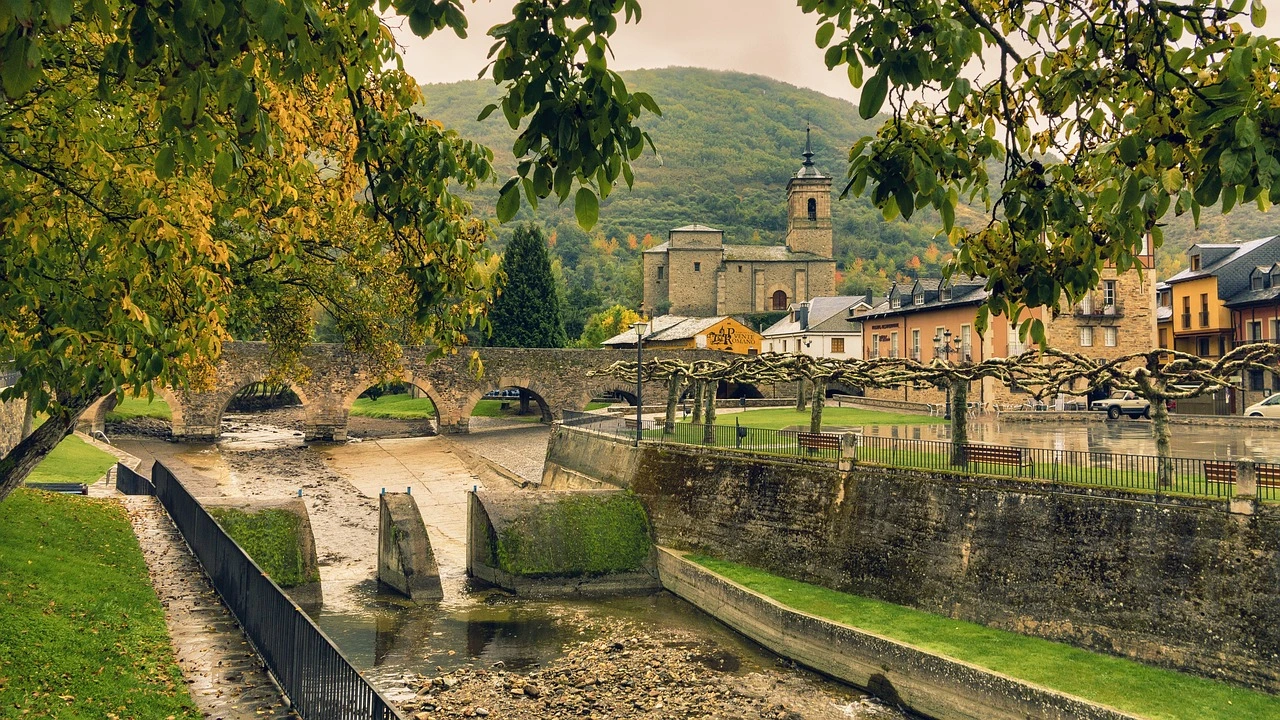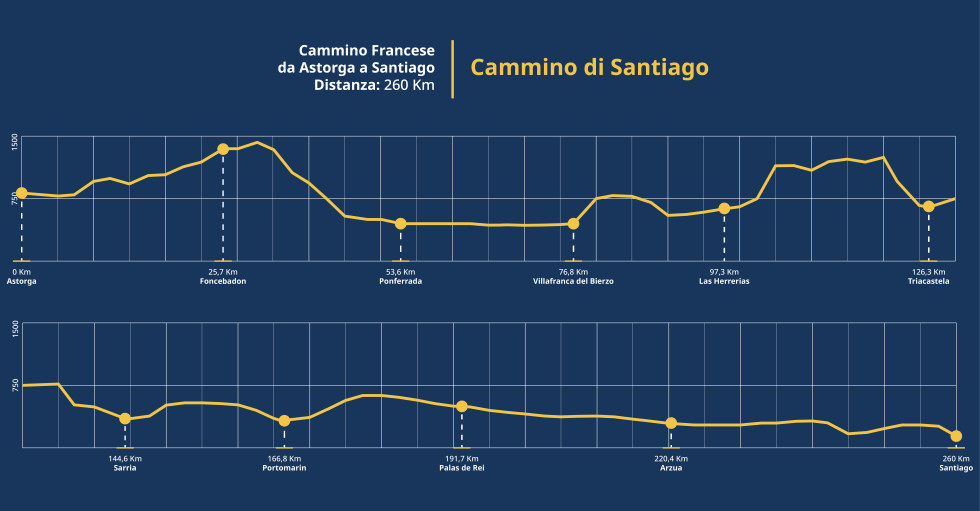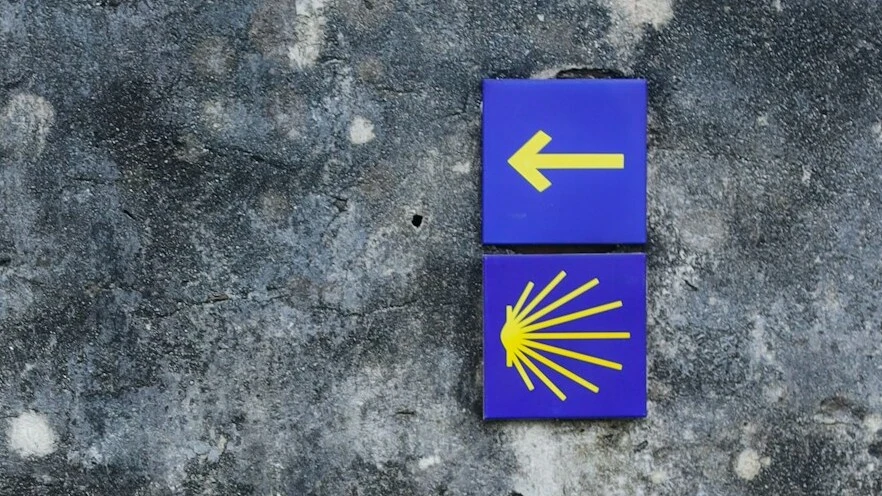Way of Saint James in 10 days
Walk the last 260 km of the French Way, starting in Astorga;
260 Km, 10 days | Spain
Walk the last 260 km of the French route of the Camino de Santiago in 10 stages, discovering the wonders of northern Spain on foot. Live your experience, choosing whether to walk alone or together with other people, deciding whether to sleep in real hotels or in so-called ‘albergues’, accommodation facilities where you can sleep for only a few euros per night; The Pilgrim’s Way to Santiago is undoubtedly a unique experience and one of the most beautiful in life for most of the people who walk it. Discover the stages, some curiosities and some tips to make the most of your walk, starting from the town of Astorga, below!
This itinerary will give you the opportunity to walk a rather long section of the route, but without needing too many days at your disposal;

Transportation
To get to Astorga you can choose to travel by train or bus, depending on your origin;
If you decide to travel by train (in our opinion it is the most comfortable and convenient solution), the station is quite close to the city centre and many direct trains from all over Spain stop there (Vigo, A Coruña, León, Ponferrada, Madrid, Bilbao, Barcelona, …).
If you prefer to take the bus, there are plenty of them and at this link you can find the main solutions for moving from nearby airports to Astorga.
For the return, on the other hand, Santiago de Compostela is well connected, both via its airport, and via trains and buses, to the main ones in Spain and Europe. At this link you will find directions on how to get from the city to the airport by bus, in case you decide to fly back.
Itinerary and stages
Stage 1 – Astorga to Foncebadón:
25,7 Km | 6/7 hours | +430m
Starting from Astorga Cathedral, one heads to Calle Portería, then turns right onto Calle Sancti Spiritu, continues following the signs and arrives on the provincial road, pointing toward Santa Colomba de Somoza.
Going further on you come to Murias de Rechivaldo, from which you must follow a path parallel to the provincial road to Santa Catalina de Somoza.
At this point continue following the very well marked route to the locality of El Ganso. Now you walk mostly inside a forest and continue to Rabanal del Camino, where a climb begins that leads up to Foncebadón.
Stage 2 – Foncebadón to Ponferrada:
27,9 Km | 6/7 hours | +320m, -1200m
Once out of Foncebadón you follow the path and about 45 minutes later you reach the Cruz de Ferro (a very important place for pilgrims who, historically, lay a stone in front of the cross as they pass) from which you then continue along a slight descent, passing by Manjarín and beginning the ascent again (which will take about 1 hour), which will then turn into a steep descent to the town of El Acebo.
You then follow the provincial road and then head along a path on the left to Riego de Ambrós. A little more than an hour later you will reach Molinaseca and then Campo.
We then cross a bridge over the río Boeza and, following the signs, arrive at the Templar Castle of Ponferrada.
Stage 3 – Ponferrada to Villafranca del Bierzo:
23,2 Km | 5/6 hours | +200m, -140m
From Ponferrada Castle take Calle Gil y Carrasco and shortly after turn right. Following the turns of the route within the city, you will pass through Compostilla and Columbrianos.
You then continue on the road to Fuentes Nuevas and thus head to Camponaraya, where you turn off the road onto a rural trail and cross the A-6.
After about half an hour of walking surrounded by nature, you reach Cacabelos and another 30 minutes later the village of Pieros. Shortly after exiting the hamlet you turn right and a few hundred meters later you head left instead, until you reach Valtville de Arriba.
Continuing for about an hour, we finally reach Villafranca del Bierzo.
Stage 4 – Villafranca del Bierzo to Las Herrerias:
20,5 Km | 5 hours | +490m, -300m
This stage begins by following rúa del Agua to a plaza where you must turn left and then cross río Burbía.
Shortly afterwards there is a choice of two variants, one easy and one much more strenuous, which I do not recommend to the inexperienced. If you follow the easy variant you will walk along a trail that follows the road and goes all the way to Trabadelo, passing through Pereje. Once in Trabadelo continue in the direction of “La Portela de Valcarce,” and then turn left toward Vega de Valcarce.
Continuing on the trail at one point a fairly steep climb begins and you arrive at Las Herrerías.
Stage 5 – Las Herrerias to Triacastela:
29 Km | 7/8 hours | +1050m, -1090m
Departing from Las Herrerías, shortly afterwards you will encounter the locality of Hospital and, after a strenuous climb, also the locality of La Faba. From here we continue for about an hour toward La Laguna and, continuing to follow the trail, finally enter the Galicia region (a point marked by a boundary stone).
Continue uphill to O Cebreiro and then head along a path that for the most part passes within a forested slope. This leads to the San Roque pass and shortly afterwards also to Hospital de Condesa. From here a very strenuous climb begins again, but it is perhaps the last of its kind until the arrival in Santiago.
It then passes through the villages of Fonfría and O Biduedo and descends to Fillobal. Continuing a few kilometers along the path we arrive at Triacastela.
Stage 6 – Triacastela to Sarria:
18,3 Km | 4/5 hours | +280m, -510m
This stage can be travelled according to two variants, one route passing through Samos and one passing through San Xil instead. In this case, we will treat the route that passes through San Xil;
Leaving Triacastela, turn right and follow the trail, crossing A Balsa and arriving at San Xil. From here you travel just under an hour along a paved road and then turn right into a forest.
After coming out of the forest, you take a provincial road and arrive in Montán. Shortly afterwards we rejoin the path of the other variant and, parallel to the road, arrive in Sarria.
For those who decide to take the variant route via Samos, it is really worth taking some time to visit the splendid monastery; of Samos and its 18th century cloister;
Stage 7 – Sarria to Portomarín:
22,2 Km | 5/6 hours | +220m, -270m
The stage begins by leaving Sarria walking through a wooded path and heading toward Barbadelo, from where it continues through some small towns, to A Brea, shortly after which there is a sign that there are only 100 km to go before arriving in Santiago de Compostela.
After about 20 minutes you reach Ferreiros and continuing for another hour to Mercadoiro.
We continue along the Camino trail and descend almost to the height of río Mino, where we cross a long and iconic bridge that leads to the town of Portomarín.
Stage 8 – Portomarín to Palas de Rei:
24,9 Km | 6/7 hours | +330m, -190m
From the center of Portomarín go down the main road and cross a bridge, then follow the path and turn right at a factory.
You will cross the road twice and reach in order the towns of Gonzar, Castromaior and Hospital da Cruz. From here we head towards Ligonde and Portos.
Continuing to walk we then pass through some small villages and arrive at Palas de Rei.
Stage 9 – Palas de Rei to Arzúa:
28,7 Km | 7 hours | +275m, -480m
Starting from Palas de Rei, about 45 minutes later, you will encounter the church of San Xulián do Camino and shortly after enter the province of A Coruna, arriving at Leboreiro.
We then continue along the road, always following the signs until we reach Mélide, a locality well known for its famous octopus, which we highly recommend trying in one of the many ‘pulperias’;
Departing from Sarria, after some ups and downs and about an hour and a half, you arrive at the village of Boente and continue along ascents and descents to Ribadiso da Baixo;
At this point, it is just under an hour to reach Arzúa, where the ‘queso de Arzúa-Ulloa’ is produced, a typical cheese of the area for which a festival is even held on the first weekend of March;
Stage 10 – Arzúa to Santiago:
39,1 Km | 9/10 hours | +360m, -570m
This stage is undoubtedly the longest and perhaps the most challenging of these 10 days of walking, so it could be broken up by stopping to sleep in Pedrouzo.
From Arzúa you walk for about half an hour, to Pregontono and continuing along the Camino you pass through many other localities, until you reach Salceda. In the following section you will cross the N-547 road more than once and head through dirt and wooded paths to A Rúa.
Continuing through the forest we reach the town of San Antón, from where we continue and approach the Santiago airport, which we skirt for a stretch; You then come to a traffic circle (from which there are 12 km to the finish) and still later reach Lavacolla and Villamaior.
Keep walking and following the signs and you will arrive at the ascent of Monte do Gozo, from which you will descend to Santiago. You are now practically there and just follow the signs within the city or simply the flow of pilgrims to arrive at praza do Obradoiro, at the Cathedral of Santiago de Compostela.

Where to sleep
We have selected for you the best accommodations along the Pilgrim’s Way to Santiago, starting from Astorga, also differentiating them by price; If you book the accommodations through this section you can rest assured, the reservation will be made directly from Booking.com or Hostelworld and you will not pay anything extra, but you will help us continue the project by earning us a small percentage!
- Day 0, Astorga | Albergue Só Por Hoje
- Day 1, Foncebadón | El Trasgu de Foncebadón
- Day 2, Ponferrada | Albergue Guiana
- Day 3, Villafranca del Bierzo | Albergue el Castillo
- Day 4, Las Herrerias | Casa Lixa Hotel Rural Albergue
- Day 5, Triacastela | Hostal-Meson Vilasante
- Day 6, Sarria | Albergue Oasis
- Day 7, Portomarín | Hotel Albergue-Turístico
- Day 8, Palas de Rei | Albergue a Casina di Marcello
- Day 9, Arzùa | Albergue San Francisco
- Day 10, Santiago | Albergue Blanco
- Day 0, Astorga | Hotel Gaudi
- Day 1, Foncebadón | El Trasgu de Foncebadón
- Day 2, Ponferrada | Hotel Aroi Bierzo Plaza
- Day 3, Villafranca del Bierzo | Plaza Mayor
- Day 4, Las Herrerias | Paraiso del Bierzo
- Day 5, Triacastela | Pension-Albergue Lemos
- Day 6, Sarria | El Malecon
- Day 7, Portomarín | Casa do Maestro
- Day 8, Palas de Rei | O Cabalo Verde
- Day 9, Arzùa | Casa do cabo
- Day 10, Santiago | Hotel Montenegro Compostela
- Day 0, Astorga | Eurostars Vía de la Plata
- Day 1, Foncebadón | El Trasgu de Foncebadón
- Day 2, Ponferrada | AC Hotel Ponferrada by Marriott
- Day 3, Villafranca del Bierzo | Parador de Villafranca del Bierzo
- Day 4, Las Herrerias | Paraiso del Bierzo
- Day 5, Triacastela | Hotel Alda Triacastela
- Day 6, Sarria | Praza Camelias
- Day 7, Portomarín | VISTALEGRE Hotel-Spa
- Day 8, Palas de Rei | O Cabalo Verde
- Day 9, Arzùa | Hotel Arzúa
- Day 10, Santiago | NH Collection Santiago de Compostela
Credential and Compostela
The Credential is the “pilgrim’s passport” and bears witness to the pilgrim’s journey, stops, and emotions; it provides access to many pilgrim welcome points and is also a fantastic keepsake to keep once the Camino is over. You can request it directly in Santiago at the Pilgrim Welcome Center, or pick it up before departure, either directly from the Brotherhood of Santiago nearest to you or from one of the authorized associations (map of associations and fraternities around the world where to apply for the credential). In Italy the benchmark is the Confraternita di San Jacopo.
Once you have completed the Pilgrim’s Way to Santiago and stamped your credential at the various places along the route (at least once/twice a day if you start from Astorga), you can obtain the ‘Compostela“, a certificate of completion of the Camino, which can be obtained directly from theOficina del Peregrinoin the centre of Santiago; you can also request the delivery of a distance certificate, which precisely indicates the days and distance of the Camino!
BONUS: guida PDF gratis
Videos and Useful Resources
It might be useful to watch some videos (here we have prepared a playlist of interesting videos) to discover some additional information on the Pilgrim’s Way to Santiago. Click on this link to see the playlist on Youtube.
For all up-to-date information regarding the St. James Way and every aspect of it, we recommend consulting the official website of the “Oficina del Peregrino”.
Other very convenient sites for planning the itinerary are the following:
- Cammino francese – Cammino di Santiago in Galicia: sito ufficiale (caminodesantiago.gal);
- Il Cammino Francese | Da Astorga a Santiago in 10 giorni | lista tappe (forwalk.org);
- Camino Francés | Gronze.com.
Guides to the St. James Way:
Listed below are some of what we think are the best guidebooks for the Camino; we do not think they are particularly necessary from a trail and directions standpoint, however, they obviously provide useful information and interesting trivia:
When to hike it
The Pilgrim’s Way to Santiago can be walked all year round, paying attention, however, to the fact that the north of Spain (crossed by the French Way) is a rather rainy region and therefore, especially in the winter periods you might find rain and in some cases even snow.
You will almost always be able to find at least one albergue open at each stage, even in the winter and less busy periods, however, it is advisable, especially at such times of the year, to contact facilities in advance to be sure of finding a place to spend the night. At this link you can find a list with information and opening dates of the main facilities along the way (the file may not be up to date, so contact the albergues directly to be sure).
Depending on the season in which you wish to walk the route, you should then carefully consider your equipment and especially your shoes (in spring/summer, we recommend light, quick-drying shoes, while in winter and autumn, comfortable waterproof shoes that are also suitable for possibly muddy paths could be appropriate);
Markers
The entire Camino is perfectly marked and there will be virtually no risk of getting lost or the need to follow the GPX track on your devices.
The markers are the classic yellow signs or arrows of the Camino de Santiago:

Other routes you might like
West Highland Way
Discover the West Highland Way, a 154-kilometer walk in Scotland through nature and unspoiled landscapes. Get inspired by WalkingEurope!
The Via degli Dei (5 days)
Discover the Via degli Dei, visiting ancient villages and observing breathtaking landscapes on a 4-night itinerary in the Tuscan-Emilian Apennines.
The Way of St. James from Sarria
Discover the Way of St. James from Sarria, walking the last 120 km, necessary to receive the “Compostela”. Go through unique places and have fantastic experiences and sensations that will remain for a lifetime!




0 Comments